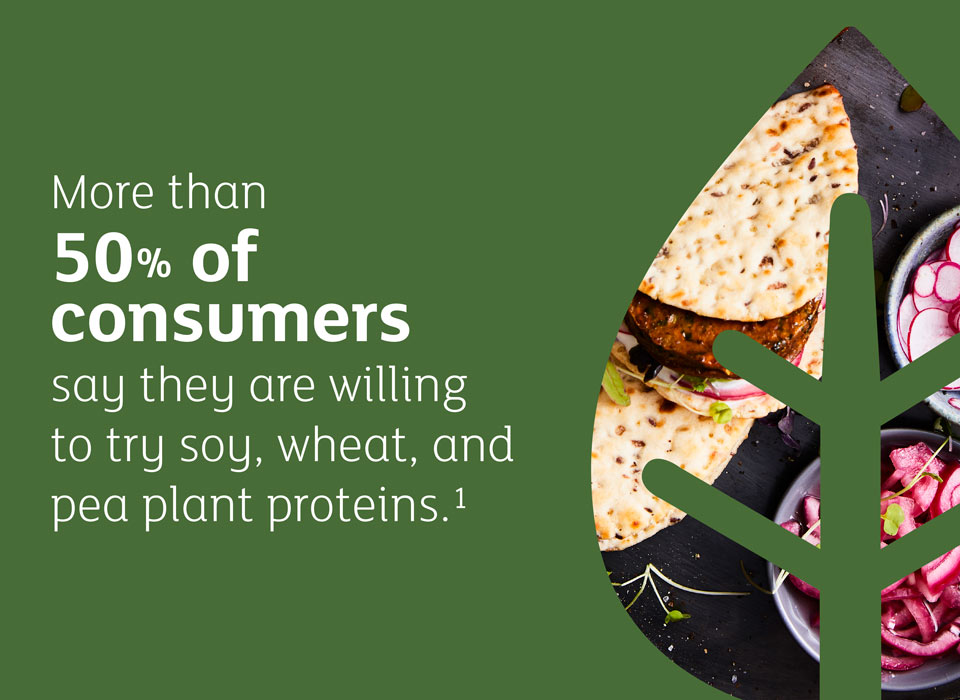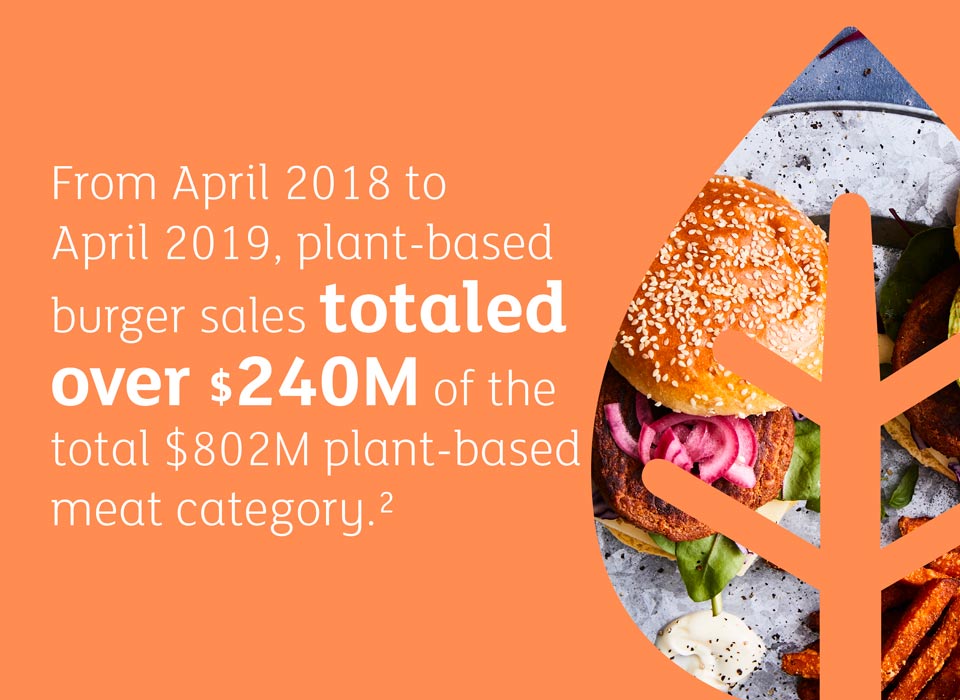Plant-Based Meat Bases
Consumers desire plant-based options that are healthier and taste as good – or better – than their traditional meat counterparts. Soy, wheat, and pea plant proteins all come with their own taste, texture, and nutritional challenges, and creating a product that masks off-notes without cluttering the label is essential to mimic meat. Additionally, moving better-for-you, plant-based meat offerings to the center of the plate by focusing on the ingredient list, mouthfeel, and flavor is critical for grabbing consumer attention and ensuring appeal in this fast-growing category.


Plant-Based Meat Formats
Burgers and sandwiches are the most familiar and preferred formats for plant-based offerings.2 However, the market has extended past burgers – to crumbles, shreds, nuggets, strips, links, cutlets, and patties.2 Consumers are looking for flexitarian options that allow them to reduce their meat consumption without sacrificing on taste or texture, so with extended product offerings, they have the ability to incorporate plant-based into favorite dishes across dayparts.


Plant-Based Meat Flavors
Consumer awareness of plant protein is growing fast and there are many reasons for choosing plant proteins. However, the transition from meat to plant will only be successful if products deliver on great taste. Having flavorful and complex beef, pork, and chicken profiles that are authentic, as well as matching characteristics associated with different cooking methods, will mask taste and aroma off-notes of the base protein while building succulence, juiciness, and craveablility.


Get Started
Sources: 1Mintel 2019, 2The Good Food Institute 2019, 3Datassential 2019
